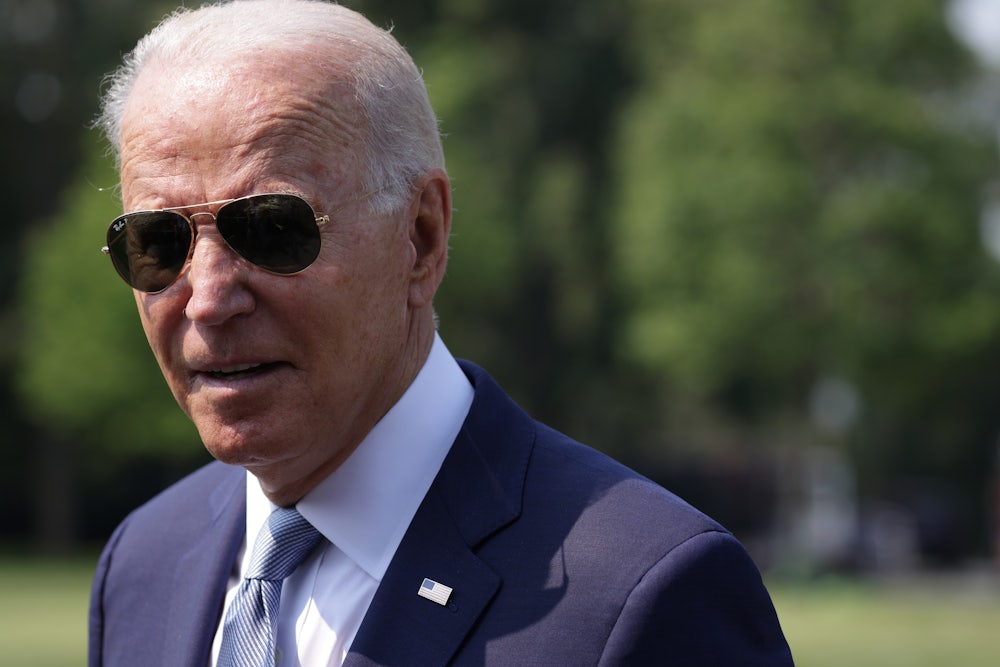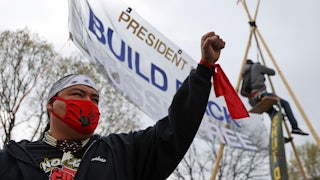One way or another, U.S. liquefied natural gas is on course for a reckoning. One batch of bad news for the industry came in May, when the International Energy Agency reported that in a scenario for meeting current climate targets, “many of the liquefied natural gas (LNG) liquefaction facilities currently under construction or at the planning stage” are “not needed.” This week, a new report from the agency found that even the slowdown in gas demand projected to begin next year “may still be too high to match a net-zero emissions path.”
Yet in May, American LNG exports climbed to record highs. LNG production here is currently on track to reach its highest-ever levels this year amid economic recoveries at home and abroad, according to the independent energy consultancy Rystad Energy. Shell noted earlier this year that it expects LNG demand to nearly double by 2040, with Asia accounting for 75 percent of demand growth.
But times could be changing. Last week, the Department of Energy announced it would review a proposed LNG export facility in Alaska’s North Slope, being built by state-owned Alaska Gasline Development Corp. The DOE’s supplemental environmental impact statement will analyze both the project’s local environmental harms and the life-cycle greenhouse gas emissions of the LNG it would export, most of which is destined for Asia. The review is being carried out as a result of two executive orders issued by the Biden administration in January, directing federal agencies to review and strengthen regulations to combat the climate crisis. Prompted by a request from the Sierra Club, this action from the department could set an important precedent for the U.S. reviewing the climate impacts of its fossil fuel exports, whose burning tends not to be reflected in domestic greenhouse gas accounting.
U.S. gas is in a tricky economic situation as it is. As exports have surged, the short-run marginal costs for exporting to one of its key target markets—Asia—have risen by 65 percent since this time last year, amid rising transportation and oil prices. Given how costly American LNG is relative to LNG from other providers like Qatar, it could struggle in Asia, in particular, over the next several years, regardless of what new climate rules stick.
Other projects have already been canceled. In March, Annova LNG announced that it was abandoning its proposed export facility in South Texas’s Brownsville Ship Channel, citing “changes in the Global LNG market.” “Without pressure from the administration on emerging markets to guarantee purchases of U.S. gas, exporters might have to navigate the competitive market environment at their own risk,” Sam Reynolds and Melissa Brown of International Energy Economics and Financial Analysis, or IEEFA, wrote in a recent report.
While the DOE review of the Alaska LNG megaproject may signal a change, state support for fossil fuels is continuing on other fronts. Founded in 2018, the U.S. government’s multi-agency Asia Enhancing Development Through Energy, or EDGE, aims to “grow sustainable and secure energy markets throughout the Indo-Pacific,” and “[expand] the downstream regional market for natural gas and LNG imports.” The program is actively supporting gas development in the Philippines, where the Gas Policy Development Project—a collaboration between that country’s Department of Energy and the University of the Philippines Statistical Center Research Foundation—is reportedly still receiving State Department funds. “We are hopeful that this particular undertaking will be the beginning of more collaboration with the U.S. government to further solidify our partnership, with our American friends helping us attain our energy goals for the country,” Philippines DOE chief Alfonso Cusi said in April. According to IEEFA, investors in LNG there could lose $14 billion as markets and regulations change.
The Obama administration proudly expanded fossil fuel exports. The question now is whether this White House intends to change course. The Biden administration has instructed the U.S. Export-Import Bank and International Development Finance Corporation to identify ways to “promote ending international financing of carbon-intensive fossil fuel-based energy.” Still, despite a drumbeat of warnings about a gas binge, whole government programs and departments—like the Department of Energy’s Office of International Affairs—remain devoted to pushing countries around the world to “encourage gas market development and access, including the development of infrastructure.”
Even an ambitious clean energy standard, a policy now being debated in infrastructure talks, could leave the door open to expanded gas infrastructure development in the United States. As the Greenpeace journalist arm, Unearthed, revealed last week, Exxon lobbyist Keith McCoy was confident in May that such a standard could leave a significant role for gas over the coming decades, even incentivizing its production with tax breaks. And nothing about that policy would place restrictions on companies’ ability to export their products abroad as government officials continue to open new markets for them, against the efforts of some of their colleagues.
Like much of the fossil fuel industry, American LNG producers could before too long be facing a crisis. The Biden administration has a choice: prepare to replace gas producers with clean energy or bail them out—at the planet’s expense.








